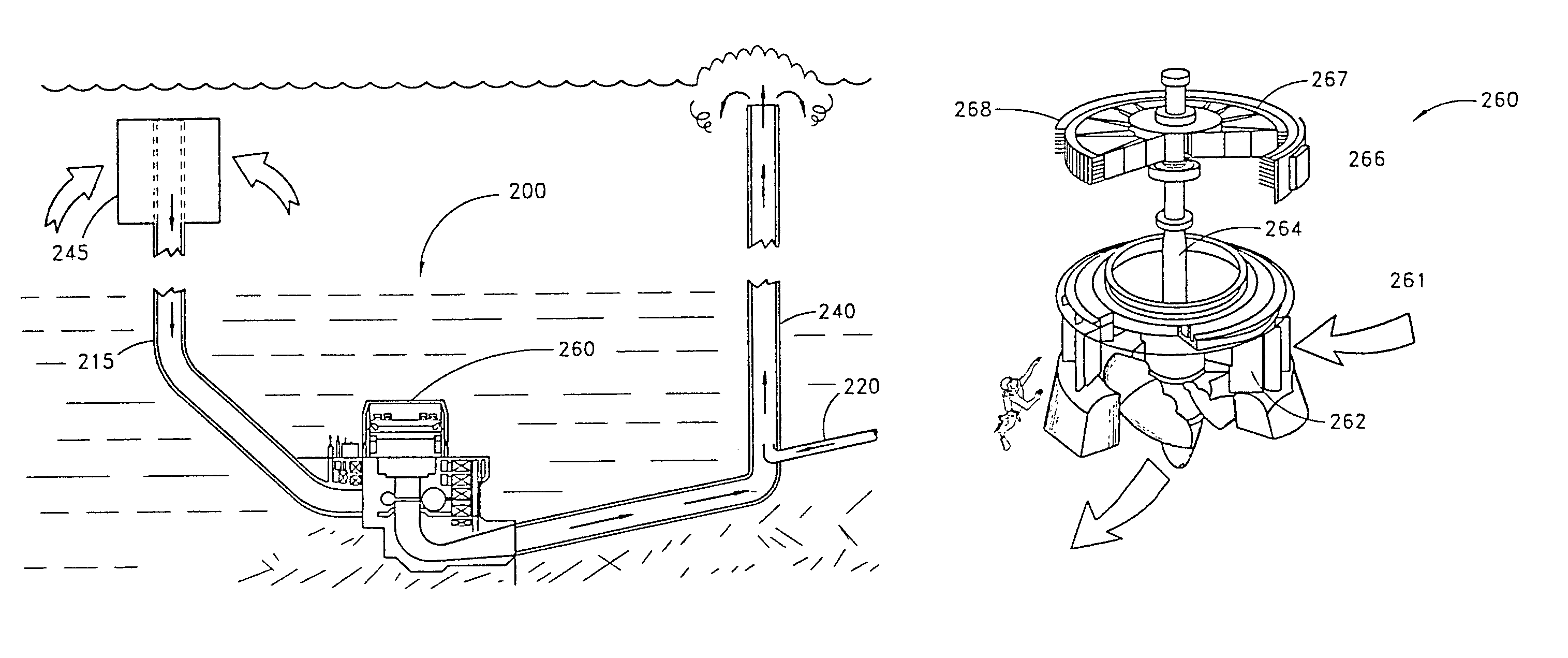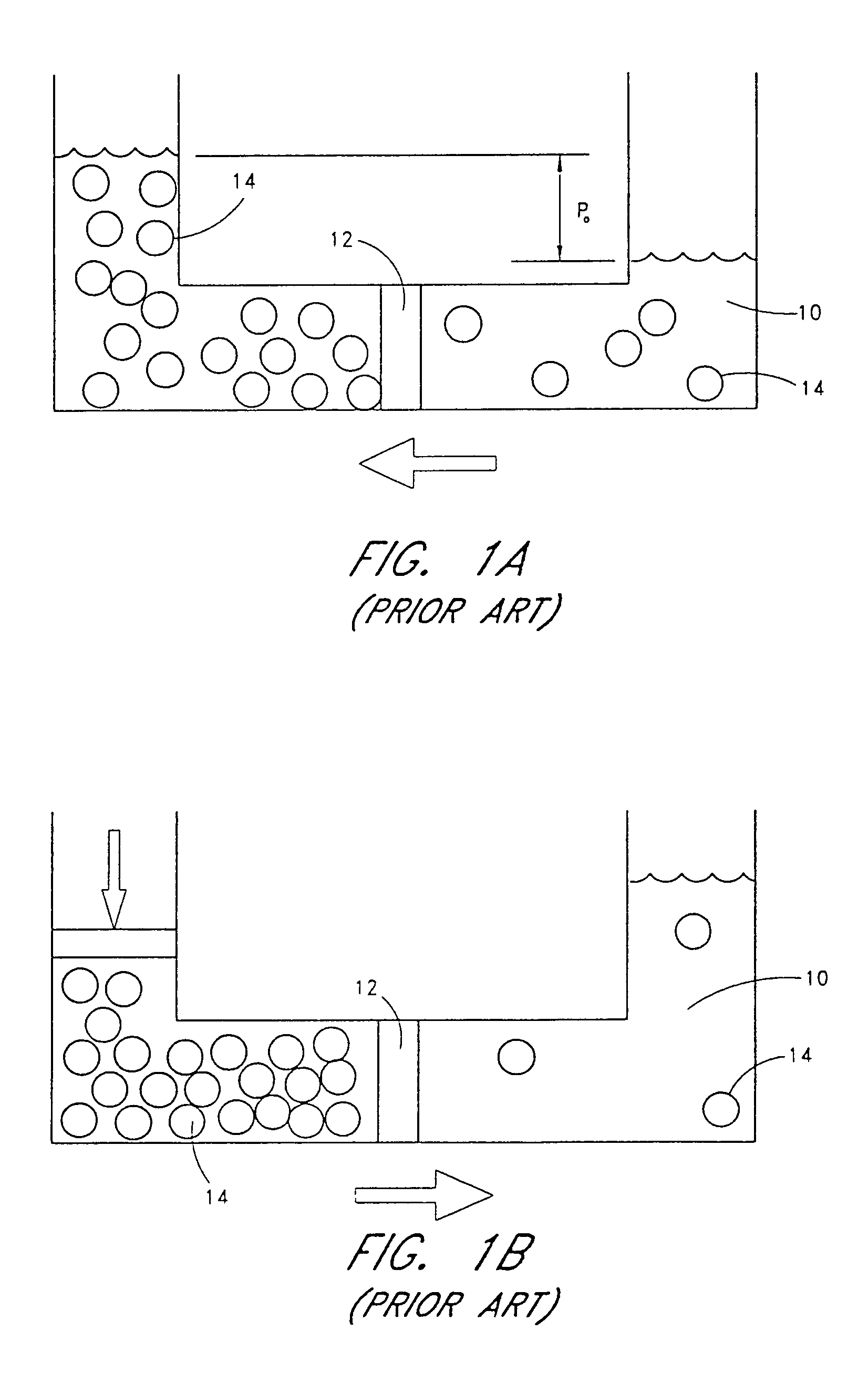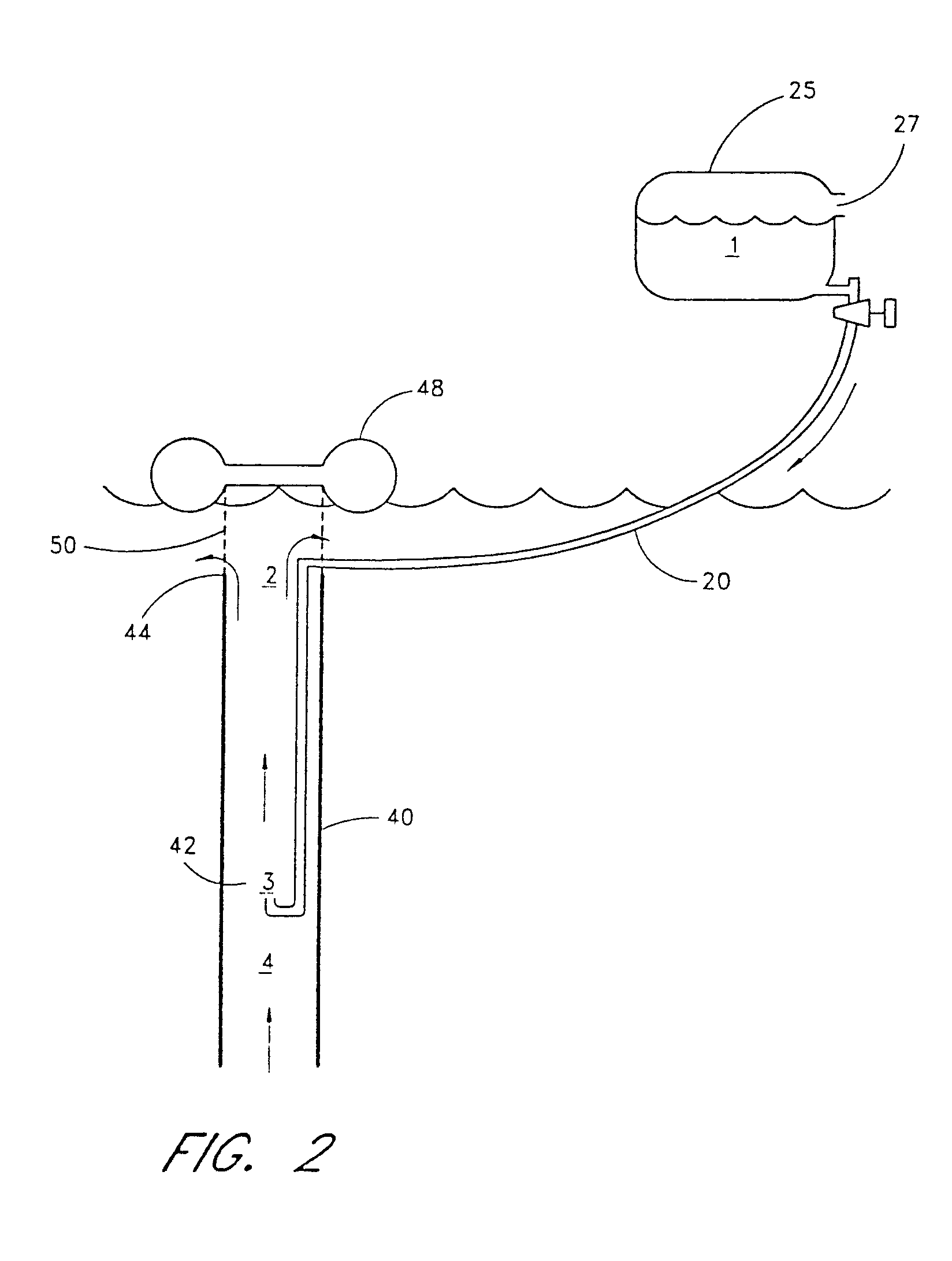Hydrocratic generator
a generator and hydropower technology, applied in the direction of motors, sea energy generation, electrical equipment, etc., can solve the problems of increasing the latent energy or enthaly of evaporated water, the production of enormous amounts of inexpensive electrical power, and the hydropower plant typically costs about $10 per megawatt hour to produce. , to achieve the effect of efficient exploiting the osmotic energy potential
- Summary
- Abstract
- Description
- Claims
- Application Information
AI Technical Summary
Benefits of technology
Problems solved by technology
Method used
Image
Examples
example 1
[0141]The apparatus shown in FIG. 2 was used to measure observed flow rates in the up tube 40 with different fresh water flow rates introduced into the down tube 20. Table 1 is a compilation of the results for flow rates at various points in the up tube 40 with two different flow rates of fresh water in the down tube 20. The flow rate at Point 1, the flow rate of fresh water from the reservoir, and the salinity at Point 2 at the outlet end 44 of the up tube 40 were measured parameters. The flow rate at Point 3, the outlet end 24 of the down tube 20, was the same as the flow rate at Point 1. The remaining flow rates were calculated using the equations discussed above.
[0142]
TABLE 1Flow Rates at Various Locations in the Up TubeHeightof ReservoirSalinity at PointFlow (10−4 m3 / sec)(meters)2 (ppt)Point 1Point 2Point 3Point 40.23341.345.51.344.20.55342.484.02.481.6
[0143]The results indicate that the flow rate of the mixed salt-water / fresh-water solution at Point 2 at the outlet end 44 of t...
example 2
Flow Rates Through the Up Tube with Salt Water vs. Fresh Water Introduced into the Down Tube
[0145]For this experiment, a 6″ turbine roof vent was attached to the outlet end 44 of the up tube 40. One of the vanes was painted to allow for the counting of rotations. The reservoir was filled with fresh water having a salinity of 300 ppm in one experiment and with salt water having a salinity of 36,000 ppm in a second experiment. The reservoir was placed at a height of 0.55 meters above the water level of the salt water in the pool. The fresh water was then allowed to flow through the down tube 20, and the rate at which the turbine rotated was determined. Then, salt water from the salt water pool was allowed to flow through the down tube 20, and the rate at which the turbine rotated was again determined. The results are shown in Table 2 below.
[0146]
TABLE 2Turbine Speed with Fresh Water vs. Salt Water in Down TubeDown Tube Water FlowTurbine Speed(10−4 m3 / sec)(rpm)Fresh Water (0.3 ppt)2.45...
example 3
[0154]A series of experiments were carried out using the experimental design described above and as illustrated in FIG. 2, but with down tubes 20 having different diameters. With each down tube 20, the flow rates of the fresh water in the down tube 20 were varied to determine the effect of different fresh water flow rates on available power. The salinity at the outlet end 44 of the up tube 40 was measured, and the water flow rates were calculated from the salinity as before. The water flow rates were used to calculate the available power at Point 2, the outlet end 44 of the up tube 40. The available power was then normalized by dividing the available power by the fresh water flow rate in the down tube 20. The results are shown in Table 4 below.
[0155]
TABLE 4Normalized Power Production vs. Diameter of Up Tube and Fresh Water Flow RatesRatio of Up TubePower / FreshSalinity atFlow (× 0.0001 m3)Down TubeArea to DownWater FlowPoint 2 (ppt)Point 1Point 4Point 2Area (m2)Tube Area(Watts / m3)31....
PUM
 Login to View More
Login to View More Abstract
Description
Claims
Application Information
 Login to View More
Login to View More - R&D
- Intellectual Property
- Life Sciences
- Materials
- Tech Scout
- Unparalleled Data Quality
- Higher Quality Content
- 60% Fewer Hallucinations
Browse by: Latest US Patents, China's latest patents, Technical Efficacy Thesaurus, Application Domain, Technology Topic, Popular Technical Reports.
© 2025 PatSnap. All rights reserved.Legal|Privacy policy|Modern Slavery Act Transparency Statement|Sitemap|About US| Contact US: help@patsnap.com



